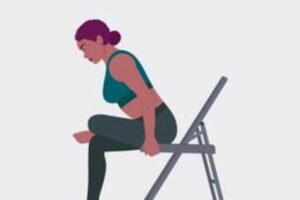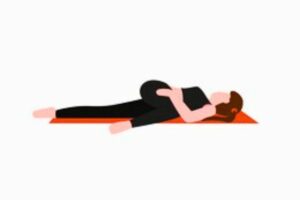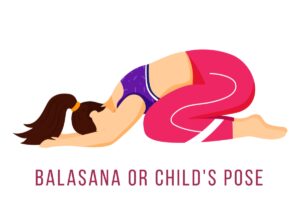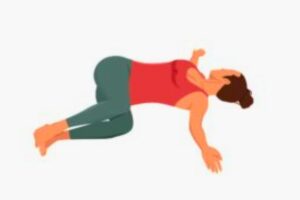Welcome to a space where lower back pain and sciatica no longer dictate the rhythm of your life.
At Innovative Therapy PC, we empower you with knowledge and back pain exercises to help you take control.
We’re more than a spine center; we’re your partners in health, striving to help you live an active, pain-free life.
What is the sciatic nerve?
The sciatic nerve, the longest in your body, starts from your lower back, travels down your legs, and ends at your feet.
Irritation or inflammation of this nerve can cause sciatica, a painful condition that can disrupt your daily activities.
Instead of relying solely on temporary relief from medication, why not explore the healing potential of specially curated exercises for lasting relief?
Also Read: Complete Sciatica Pain Guide – Symptoms, Causes, Diagnosis, Tests, and Essential Treatments
10 Exercises for Sciatica Pain Relief
Our exercises are medically reviewed, focusing on reducing pain and strengthening your lower back to prevent future discomfort.
Here’s a rundown of our top 10 exercises:
1. Reclining Pigeon Pose

This yoga pose opens up the hips, reducing pressure on the sciatic nerve.
Step 1: Lie on your back and bring your right leg up to a right angle. Clasp both hands behind your thigh.
Step 2: Lift your left leg and place your right ankle on top of the left knee.
Step 3: Hold the position for a moment to feel the stretch, then repeat with the other leg.
Benefit: The Reclining Pigeon Pose stretches the piriformis muscle (in the buttock region), which can become inflamed and press against the sciatic nerve, causing pain.
2. Sitting Pigeon Pose

A variant of the pigeon pose, it allows for more controlled stretching of the lower back.
Step 1: Sit on the ground with your legs stretched out straight in front of you.
Step 2: Bend your right leg, putting your right ankle on top of the left knee.
Step 3: Lean forward and allow your upper body to reach toward your thigh. Hold for 15 to 30 seconds, then repeat on the other side.
Benefit: This pose can help ease muscle tension and improve flexibility, two factors crucial in managing sciatica pain.
3. Knee to Opposite Shoulder
This exercise targets the muscles affected by the sciatic nerve, providing relief.
Step 1: Lie on your back with your legs extended and your feet flexed upward.
Step 2: Bend your right leg and clasp your hands around the knee.
Step 3: Gently pull your right leg across your body toward your left shoulder. Hold it there for 30 seconds, then push it back and repeat with the other leg.
Benefit: This stretch can loosen the piriformis and gluteal muscles, helping alleviate sciatica pain.
4. Standing Hamstring Stretch

A classic, this stretch targets the hamstring muscle group.
Step 1: Stand upright and place your right foot on an elevated surface, either a step or a sturdy chair. Your foot should be flexed, with your toes and straight leg pointing straight up towards the ceiling.
Step 2: Bend forward at the waist and aim to touch your toes with both hands, keeping the leg on the chair straight. Repeat the stretch 2-4 times on both legs.
Benefit: This stretch can improve flexibility in your hamstrings, reducing the stress on your lower back.
We’ll now explore six more exercises designed to help manage sciatica and lower back pain.
By incorporating these exercises into your daily routine, you’re not just managing your pain – you’re actively fortifying your body against future flare-ups.
5. Spinal Stretch

This is an effective exercise to separate the vertebrae in your spine, relieving pressure on your sciatic nerve.
Step 1: Lie on your back, extend your arms to the sides and bend your knees.
Step 2: While keeping your shoulders firmly on the floor, roll your knees to one side.
Step 3: Hold for 20 seconds. Roll your knees to the other side and repeat.
Benefit: The spinal stretch can help improve your lower back flexibility, reducing tightness and pain.
6. Seated Spinal Twist

This exercise improves spinal mobility, crucial for a healthy back.
Step 1: Sit on the floor with your legs stretched out in front of you.
Step 2: Bend your right knee and place the foot on the outside of your left knee. You can keep the left leg straight or curl it inwards.
Step 3: Twist your torso to the right and hold for 20-30 seconds. Repeat on the other side.
Benefit: Regularly performing this exercise can enhance spinal rotation, which can often be limited with back pain conditions.
7. Cat-Camel Pose

This pose is an excellent way to warm up your spine and prepare your body for other exercises.
Step 1: Position yourself on your hands and knees.
Step 2: Arch your back, pushing your belly towards the floor while lifting your head and tailbone towards the ceiling (Camel Pose).
Step 3: Slowly reverse the movement by pushing your belly towards the ceiling while dropping your head and tailbone towards the floor (Cat Pose). Repeat for a minute.
Benefit: This stretch gently mobilizes your spine, reducing stiffness and promoting better posture.
8. Child’s Pose

This relaxing pose is great for stretching and releasing tension in the lower back.
Step 1: Start on your hands and knees, then sit back on your heels.
Step 2: Reach your arms forward and rest your forehead on the floor.
Step 3: Breathe deeply and hold the pose for 1-3 minutes.
Benefit: The Child’s Pose helps lengthen and align the spine, relieving tension and improving circulation to your back and hips.
9. Knee to Chest Stretch

A simple yet powerful exercise to reduce tension in your lower back and hips.
Step 1: Lie on your back with your knees bent and feet flat on the floor.
Step 2: Use your hands to pull one knee in towards your chest.
Step 3: Hold for 20-30 seconds, then switch to the other knee.
Benefit: This stretch can help align your pelvis and stretch the rear muscles of the hip and lower back.
10. Lower Trunk Rotation

This exercise strengthens your lower back and core muscles, improving your spine’s support.
Step 1: Lie on your back with your knees bent and feet flat on the floor.
Step 2: Keep your shoulders firmly on the floor as you roll both knees to one side.
Step 3: Stay for 5-10 seconds, then roll to the other side. Repeat 5-10 times on each side.
Benefit: This exercise helps relieve tension in your lower back and hips, providing relief from sciatica symptoms.
The BODi Power System
If these activities are not working to resolve your pain, using our BODi Power System offers a more specific solution.
Our proprietary system focuses on balancing your neuromuscular system so all the parts of your body work together.
All your parts were created to integrate and cooperate as a strong team.
The BODi Power System gives you a road map for a powerful healing journey.
Frequently Asked Questions About Back Pain Exercises
Our clients often ask us about the effectiveness of stretching for sciatica, the top exercises, and how to strengthen the lower back. We’ve compiled answers to these questions and more, to ensure you’re well-equipped on your journey to recovery.
What is the best exercise for back pain?
The best exercise for back pain can vary depending on the underlying cause and the individual’s specific condition.
However, exercises that emphasize stretching, strengthening, and flexibility, such as Pilates, yoga, and low-impact aerobics, can often be beneficial.
Specific exercises like cat-cow stretches, bird-dog poses, and pelvic tilts might also help.
It’s advisable to consult with a healthcare provider or physical therapist who can design a personalized program tailored to your needs.
Does walking help lower back pain?
Yes, walking can be an effective way to help alleviate lower back pain.
It’s a low-impact exercise that helps in maintaining flexibility, strength, and endurance in the spine.
Walking promotes healthy circulation, which can aid in healing, and helps to keep the spine’s supportive muscles engaged.
It’s generally gentle enough to be suitable for most people with lower back pain, but the intensity and duration should be tailored to the individual’s comfort and overall condition.
How can I strengthen my lower back and relieve pain?
Strengthening the lower back and relieving pain can often be accomplished through a combination of exercises and lifestyle adjustments.
Here’s a general approach:
1. Stretching: Exercises like hamstring stretches and spinal stretches can increase lexibility and alleviate tension in the lower back.
2. Strengthening: Targeted exercises such as bridges, planks, and back extensions work to strengthen the muscles that support the spine.
3. Aerobic Exercise: Low-impact activities like swimming or biking can improve overall endurance and contribute to a healthier back.
4. Posture Improvement: Pay attention to proper posture, especially when sitting or lifting objects.
5. Ergonomic Adjustments: Make adjustments to your workspace and home environment to reduce strain on the back.
6. Consult a Professional: Engaging with a physical therapist or healthcare provider specializing in back health ensures that you have a plan tailored to your specific needs and conditions.
Please remember, it’s best to consult with healthcare professionals or physical therapists to understand the most appropriate exercises and strategies for your specific situation.
They can provide a customized plan that takes into consideration your particular condition, limitations, and goals.
Conclusion
At Innovative Therapy PC, we’re passionate about helping you reclaim an active, pain-free life.
With these medically reviewed exercises for lower back pain and sciatica relief, you’re not just managing symptoms – you’re actively creating a stronger, more flexible body.
To schedule an appointment, call us at (214) 225-8530 or email mary@innovativetherapypc.com. Let’s walk together on this journey towards wellness and vitality.
Remember, before starting any back pain exercises regimen, it’s crucial to consult with healthcare professionals to avoid exacerbating any existing conditions.
All exercises should be performed within the realms of comfort, and any pain experienced during these exercises should be taken seriously.





